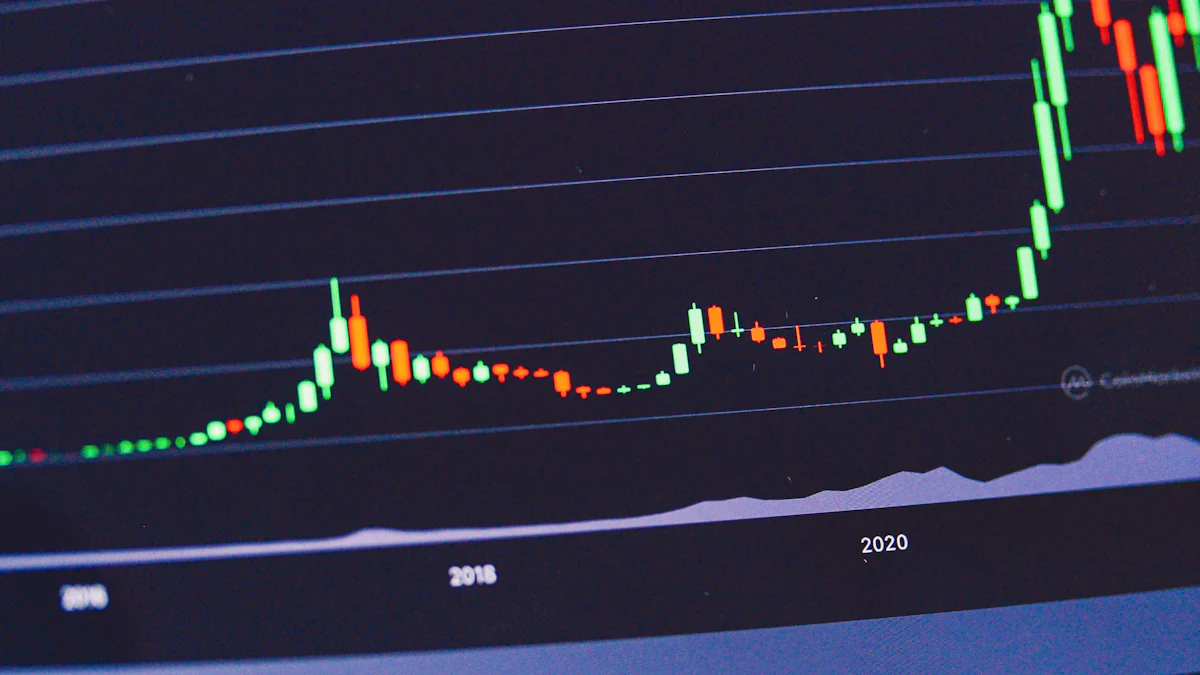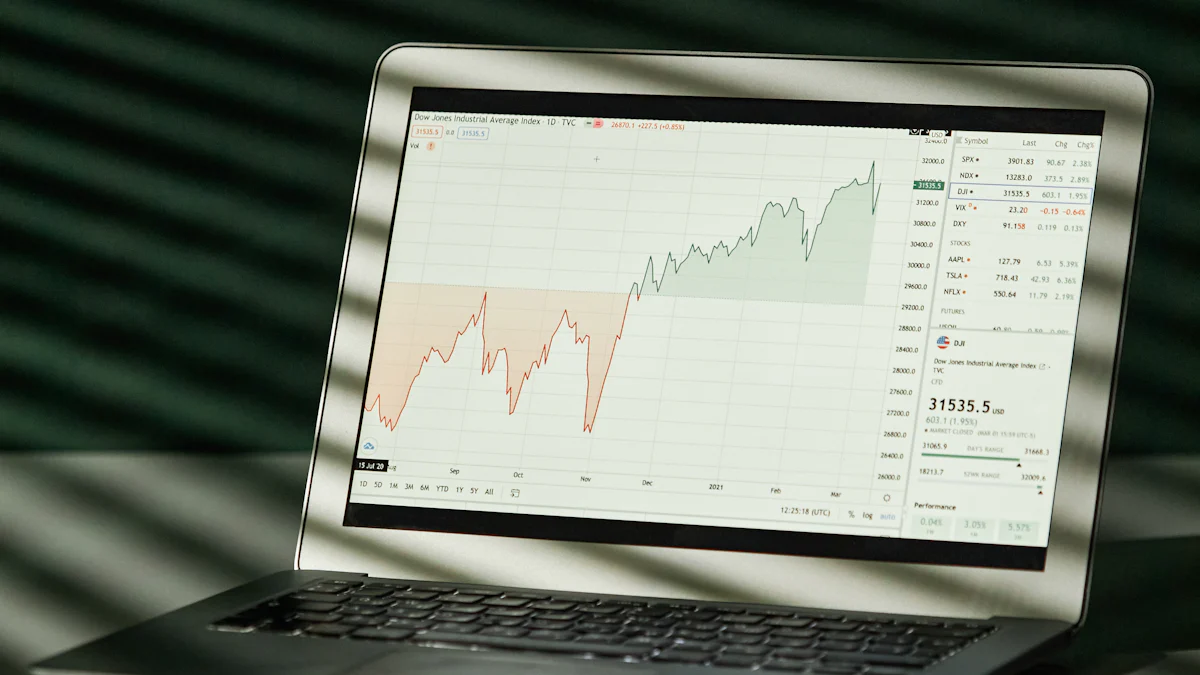How to Leverage Google Trends for Market Insights

Google Trends is a powerful tool that helps you understand what people are searching for online. It provides insights into the popularity of various topics by analyzing search data from Google. This tool is essential for businesses seeking market insights. Understanding market trends allows you to tailor your strategies effectively. By leveraging Google Trends, you can gain a competitive edge, optimize your marketing efforts, and better meet consumer needs. This tool offers real-time data and geographic segmentation, enabling you to respond quickly to changes in consumer interest.
Understanding Google Trends
What is Google Trends?
Definition and purpose
Google Trends is a free tool that shows you how often people search for specific terms on Google. It helps you gauge interest in a topic or keyword over time. By analyzing search data, you can see what's currently popular and understand shifts in consumer preferences. This tool is invaluable for marketers, researchers, and anyone keen to understand trends.
Key features and functionalities
Google Trends offers several key features that make it a powerful platform for analyzing search trends:
Real-time Data: You can access up-to-the-minute data on search queries, allowing you to respond quickly to emerging trends.
Geographic Segmentation: The tool provides insights into where searches are most popular, helping you tailor your strategies to specific regions.
Visual Representations: Data is presented in line charts, tables, and maps, making it easy to visualize and understand trends over time.
Related Topics and Queries: Discover related search terms and topics, which can help you expand your research and marketing efforts.
How Google Trends Works
Data sources and collection
Google Trends collects data from Google search results. When you type in a phrase, such as "skincare products," the tool shows how the pattern of searches for that term changes over a given period. This data comes from a vast pool of search queries, providing a comprehensive view of what people are interested in.
Interpreting trend data
Interpreting data from Google Trends involves understanding the visual representations provided. The tool uses line charts to show changes in search interest over time. You can compare different search terms to see how their popularity varies. Additionally, Google Trends highlights seasonal trends, such as increased searches for "Christmas presents for mom" in November and December. By analyzing these patterns, you can make informed decisions about your marketing strategies.
Using Google Trends for SEO
Identifying Popular Keywords
Analyzing search volume
Google Trends is an essential tool for identifying popular keywords. By analyzing search volume, you can determine which terms attract the most interest. This insight helps you focus your SEO efforts on keywords that drive traffic to your website. When you enter a keyword into Google Trends, it shows how often people search for it over time. This data allows you to gauge the popularity of a term and decide if it's worth targeting in your content.
Seasonal trends and patterns
Understanding seasonal trends is crucial for effective SEO. Google Trends reveals how search interest fluctuates throughout the year. For instance, searches for "Halloween costumes" spike in October. Recognizing these patterns enables you to optimize your content for peak search times. By aligning your SEO strategy with seasonal trends, you can increase visibility and engagement during high-demand periods.
Competitor Analysis
Comparing keyword performance
Google Trends also aids in competitor analysis by allowing you to compare keyword performance. You can benchmark several search terms against each other to see which ones attract more interest. This comparison helps you understand what people are looking for and how your competitors are performing. By identifying which keywords your competitors rank for, you can adjust your strategy to target those terms and improve your search engine rankings.
Identifying content gaps
Identifying content gaps is another valuable application of Google Trends. By analyzing trending keywords and comparing them with your existing content, you can spot areas where your competitors have an edge. This insight allows you to create content that fills these gaps, providing value to your audience and enhancing your SEO efforts. By addressing unmet needs, you can attract more visitors and establish your brand as a leader in your industry.
Leveraging Google Trends for Marketing

Understanding Consumer Behavior
Analyzing interest over time
Google Trends offers a window into consumer behavior by showing how interest in specific topics changes over time. You can track the rise and fall of search queries, helping you understand what captures people's attention at different times. For instance, if you notice a spike in searches for "home workout equipment" during certain months, you can infer that consumers are more interested in fitness during those periods. This insight allows you to align your marketing strategies with consumer interests, ensuring that your efforts resonate with your audience.
Regional interest and demographics
Understanding where your audience is located and their demographic characteristics is crucial for effective marketing. Google Trends provides geographic data that reveals where searches are most popular. This information helps you tailor your marketing campaigns to specific regions. For example, if you find that "vegan recipes" are trending in California but not in Texas, you can focus your marketing efforts on areas with higher interest. Additionally, demographic insights allow you to create content that appeals to specific age groups or genders, enhancing the relevance of your marketing messages.
Developing Marketing Strategies
Trend-based content creation
Creating content based on current trends can significantly boost your marketing efforts. Google Trends helps you identify what topics are gaining traction, allowing you to produce content that aligns with these interests. By focusing on trending topics, you can increase engagement and attract more visitors to your website. For example, if "sustainable fashion" is trending, you can create blog posts, videos, or social media content around this theme. This approach not only enhances your visibility but also positions your brand as a thought leader in your industry.
Timing marketing campaigns
Timing is everything in marketing. Google Trends enables you to time your campaigns effectively by providing insights into when interest in specific topics peaks. By aligning your marketing efforts with these peaks, you can maximize your impact and reach a larger audience. For instance, if you know that searches for "back-to-school supplies" increase in August, you can plan your promotions and advertisements accordingly. This strategic timing ensures that your marketing messages reach consumers when they are most receptive, increasing the likelihood of conversion.
Applying Google Trends in E-commerce

Product Research and Development
Identifying emerging product trends
In the fast-paced world of e-commerce, staying ahead of product trends is crucial. Google Trends serves as a valuable tool for identifying emerging trends in consumer interests. By analyzing search data, you can spot rising interest in specific products or categories. For instance, if you notice an increase in searches for "eco-friendly gadgets," it indicates a growing consumer preference for sustainable technology. This insight allows you to align your product offerings with current market demands, ensuring that you remain competitive.
Understanding consumer demand
Understanding consumer demand is essential for successful product development. Google Trends provides insights into what consumers are searching for, helping you gauge interest levels in various products. By examining search volume data, you can determine which products are gaining traction and which ones are losing popularity. This information enables you to make informed decisions about product development and inventory management. For example, if searches for "wireless earbuds" are consistently high, it suggests strong consumer demand, prompting you to focus on expanding your product line in this area.
Optimizing Product Listings
Using trending keywords
Optimizing product listings with trending keywords can significantly enhance your visibility in search results. Google Trends helps you identify popular search terms related to your products. By incorporating these keywords into your product titles, descriptions, and tags, you increase the likelihood of appearing in relevant search queries. For instance, if "organic skincare" is trending, using this keyword in your product listings can attract more potential customers. This strategy not only improves your search engine rankings but also drives more traffic to your e-commerce site.
Enhancing product descriptions
Effective product descriptions play a vital role in converting visitors into customers. Google Trends provides insights into consumer preferences and interests, allowing you to tailor your product descriptions accordingly. By understanding what consumers are searching for, you can highlight the features and benefits that resonate most with your target audience. For example, if "durability" is a key concern for consumers searching for "backpacks," emphasizing this aspect in your product descriptions can enhance their appeal. Crafting compelling and informative descriptions helps build trust with potential buyers and encourages them to make a purchase.
Advanced Applications of Google Trends
Predictive Analysis
Forecasting market trends
Google Trends offers a powerful tool for predicting market trends. By analyzing search data, you can identify patterns that indicate future consumer behavior. This predictive capability allows you to anticipate shifts in the market and adjust your strategies accordingly. For example, if you notice a steady increase in searches for "electric vehicles," it suggests a growing interest in sustainable transportation. You can use this insight to explore opportunities in related industries or adjust your product offerings to meet emerging demands.
Advance Metrics, experts in market analysis, emphasize the importance of using Google Trends for trend prediction. They state, "This post offers a comprehensive insight into Google Trends, from basic applications to advanced techniques for market analysis and trend prediction."
Anticipating consumer needs
Understanding consumer needs is crucial for business success. Google Trends helps you anticipate these needs by revealing what people are searching for. By examining search queries, you can gain insights into consumer preferences and tailor your products or services to meet these demands. For instance, if searches for "home office furniture" are on the rise, it indicates a shift towards remote work. You can use this information to develop products that cater to this trend, ensuring that you stay ahead of the competition.
Integrating with Other Tools
Combining with Google Analytics
Integrating Google Trends with Google Analytics enhances your ability to analyze and interpret data. Google Analytics provides detailed insights into website traffic and user behavior. By combining this data with Google Trends, you can gain a deeper understanding of how search trends impact your online presence. For example, if Google Trends shows an increase in searches for "vegan recipes," you can use Google Analytics to track how this trend affects traffic to your food blog. This integration allows you to make data-driven decisions and optimize your content strategy.
Using with social media insights
Social media platforms are rich sources of consumer insights. By integrating Google Trends with social media analytics, you can gain a comprehensive view of consumer interests and behavior. Social media insights reveal what topics are trending and how users engage with content. By comparing this data with Google Trends, you can identify opportunities to create content that resonates with your audience. For instance, if both Google Trends and social media analytics show a spike in interest for "sustainable fashion," you can develop marketing campaigns that align with this trend, increasing your reach and engagement.
Marketing Professionals highlight the value of leveraging Google Trends data for finding untapped niches and seasonal trends. They suggest, "Discover use cases around leveraging Google Trends data to find untapped niches and seasonal trends."
In conclusion, Google Trends emerges as an indispensable tool for gaining market insights. It empowers you to understand consumer behavior, identify trending keywords, and optimize marketing strategies. By leveraging its real-time data and geographic segmentation, you can stay ahead of the competition and respond swiftly to emerging trends. Embrace Google Trends to drive business growth and enhance your market research efforts. Staying informed with these insights ensures that your strategies remain relevant and effective in a rapidly changing market landscape.
See Also
Revolutionizing Trend Discovery: 5 Ways Exploding Topics Helps
Unveiling Google's SGE: The Future of SEO and Optimization
SEO Evolution: Navigating Google's Search Generative Experience Era

